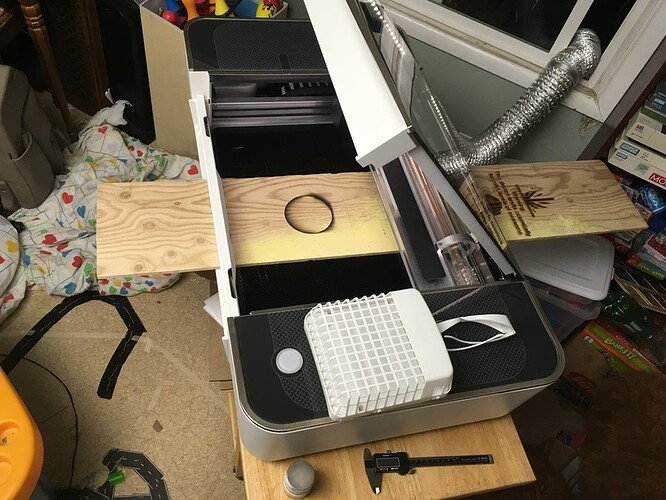Okay, I played with the passthrough to make my ventilation solution for the house:
I did ultimately manage to get my Glowforge fully impaled:
But it took a LOT of work to finally happen. Primarily because I was using the absolute thickest material which will work, 0.35" (and the plywood was at least partially warped)
Videos of my initial attempt to push through the front of the machine and straight out the back side: (posting now, but YouTube is busy processing the videos for some reason. No clue how long it will take. They aren’t particularly interesting, just me failing)
My kids assisted with the filming on this failed attempt. My eventual success was not filmed, as I needed to use both hands.
How I finally got it to work, was to push in from the back of the machine, and then drop the front door so I could get a good grip on the rubber flap to pull it inside the Glowforge and lay it on top of the plywood. Once I had the plywood fully settled under the rubber, the rest was quite simple.
Pulling back the rubber:
The scorch mark you can see on the rubber is from me having moved the head while trying to manipulate the rear-flap earlier. That caused an offset in my cut:
But fortunately that led to me answering a question someone had asked in another thread (which I cannot find right now): The minimum distance from out-of-machine material to cut-inside-machine space:
My cut-to-wall distance (not sure this is in the normally allowed cutting area, since I had offset my home position):
My marking of the exterior portion of the wood:
And a measurement (post-tape, which messed up the ability to be accurate… oops):
So, it looks like anyone wanting to cut/engrave an object which grows too large for the passthrough eventually can engrave up to about 1.2 inches away from the engorged/warped section of the material in question.

